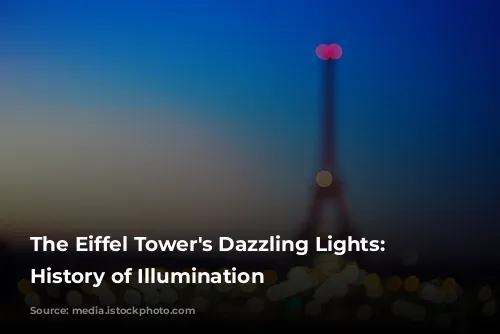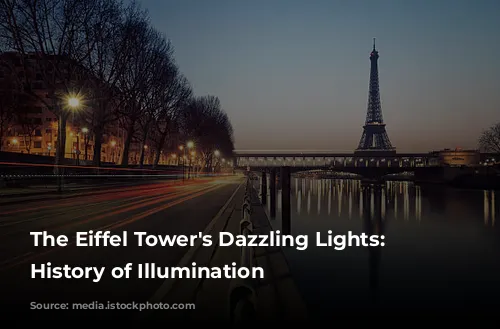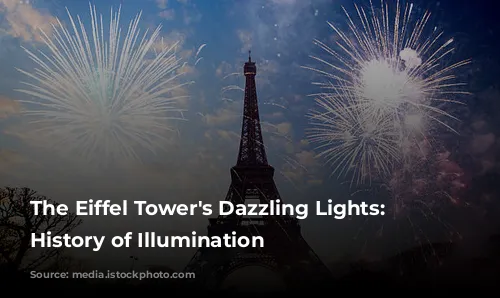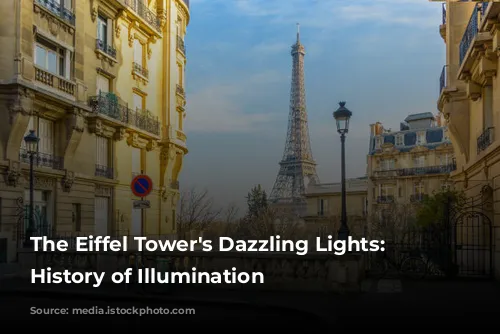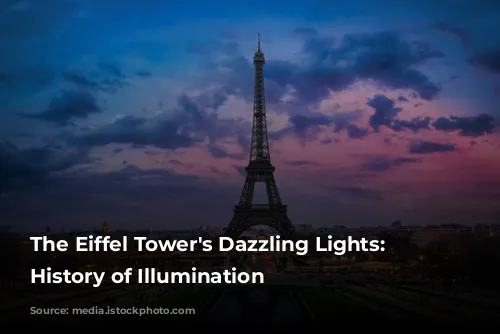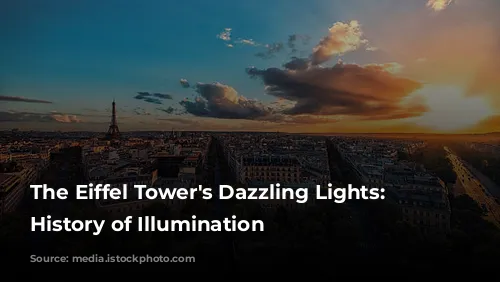The Eiffel Tower, standing tall in the heart of Paris, is renowned for its architectural prowess. But as night falls, this iconic structure transforms into a dazzling spectacle. Its shimmering lights, illuminating the Parisian skyline, have captivated generations of visitors.
From humble beginnings to captivating displays, the Eiffel Tower’s lights have evolved with the times. Let’s journey through the history of its illuminations, exploring how this symbol of France has become a canvas for artistic expression and a beacon of hope.
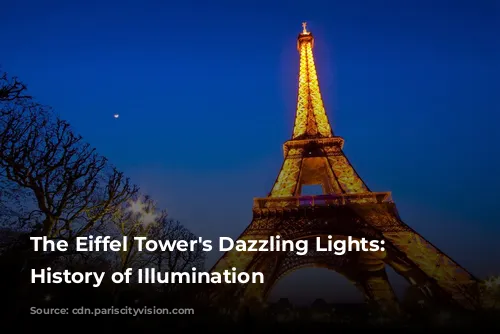
A Glimpse of the Past: Early Illuminations
Imagine the Eiffel Tower, newly constructed, standing proud against the twilight sky. In 1889, the idea of illuminating this architectural marvel sparked to life. Gaslights, housed within opalescent glass globes, were the pioneers of this nocturnal spectacle. These early illuminations cast a warm glow over the Tower, creating a mesmerizing beacon in the Parisian night.
The Tower’s first illuminations also incorporated a lighthouse, which emitted flashes of light in the colors of the French flag. This symbolic gesture showcased the Tower’s national significance and provided a captivating visual treat.
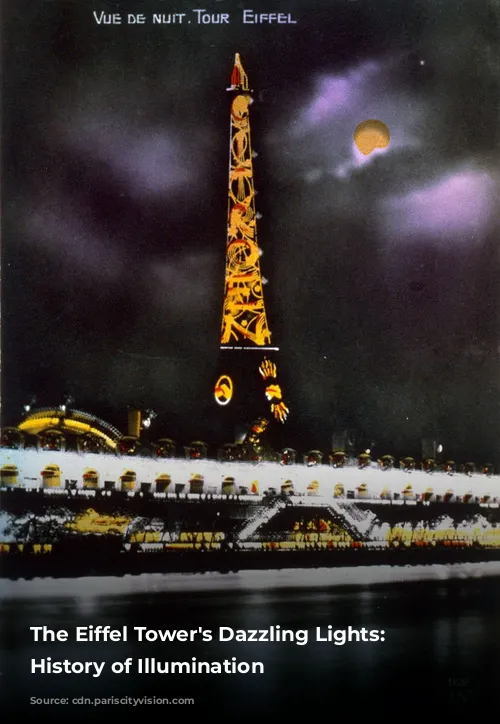
The 20th Century: A Period of Experimentation and Innovation
The 20th century ushered in a new era of innovation, transforming the Eiffel Tower’s illuminations from simple, utilitarian lights into a dazzling spectacle. The 1920s saw the rise of electric lights, illuminating the Tower with a modern brilliance.
In 1925, the Citroen Group, a major automotive company, took the stage with an extraordinary spectacle. They draped the Tower in an immense display of 250,000 multicolored lights, creating a colossal advertisement visible from a distance of 40 kilometers. This event showcased the Tower’s potential as a grand stage for artistic expression and commercial advertisement.
The 1930s saw another innovative approach to lighting, with the addition of a 15-meter wide clock tower. This mechanical marvel, equipped with colored minute and second hands, became a temporary attraction, captivating Parisians with its unique blend of illumination and timekeeping.
The 1937 Arts and Techniques Exhibition offered a spectacular display of modern lighting techniques, illuminating the Eiffel Tower in an ethereal glow.
A Symphony of Light: The 70s and Beyond
The Eiffel Tower’s illuminations continued to evolve in the following decades, with each event adding a new layer of enchantment to this Parisian icon.
In the 1970s, Christmas 1978 saw the Tower transformed into a colossal, luminous Christmas tree. This spectacle, featuring thousands of twinkling lights, painted a magical image against the winter sky. The festive spirit of Christmas was reflected in the Tower’s glow, creating an unforgettable memory for Parisians and visitors alike.
The turn of the millennium marked a new era for the Eiffel Tower’s illuminations. The year 2000 saw an elaborate light show, a fiery waltz of pyrotechnics, celebrating the dawn of a new millennium.
The Eiffel Tower’s illuminations continued to evolve, with each event showcasing its potential as a canvas for visual storytelling. From celebrating cultural events like the Chinese New Year in 2004 to showcasing support for global causes, like the fight against breast cancer in 2014, the Eiffel Tower’s lights became a beacon of unity and shared values.
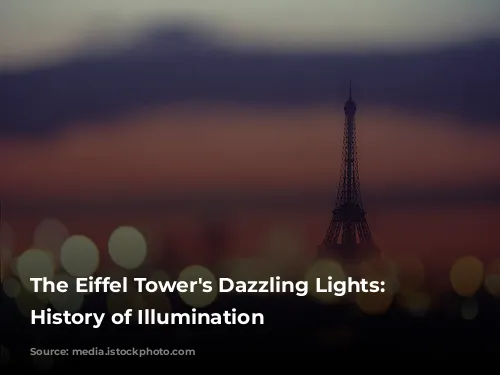
Witness the Magic: Explore the Eiffel Tower’s Illuminations Today
The Eiffel Tower’s illuminations offer a mesmerizing glimpse into the history of Parisian innovation and creativity. Every night, the Tower transforms into a spectacle of light, inviting you to witness its captivating glow. Whether you choose to admire the twinkling lights from the Trocadero, enjoy a romantic Seine River cruise, or ascend the Montparnasse Tower, the Eiffel Tower’s illuminations will leave an unforgettable mark on your memory.
To plan your visit to the Eiffel Tower and discover more about its fascinating history, explore the wealth of information available on Paris City Vision.


